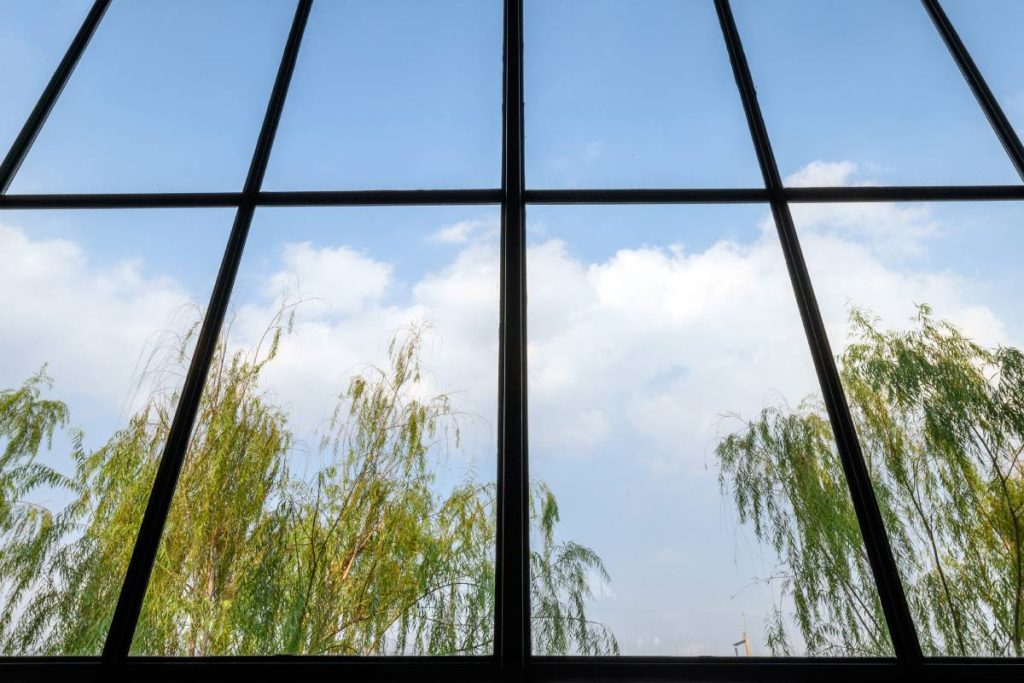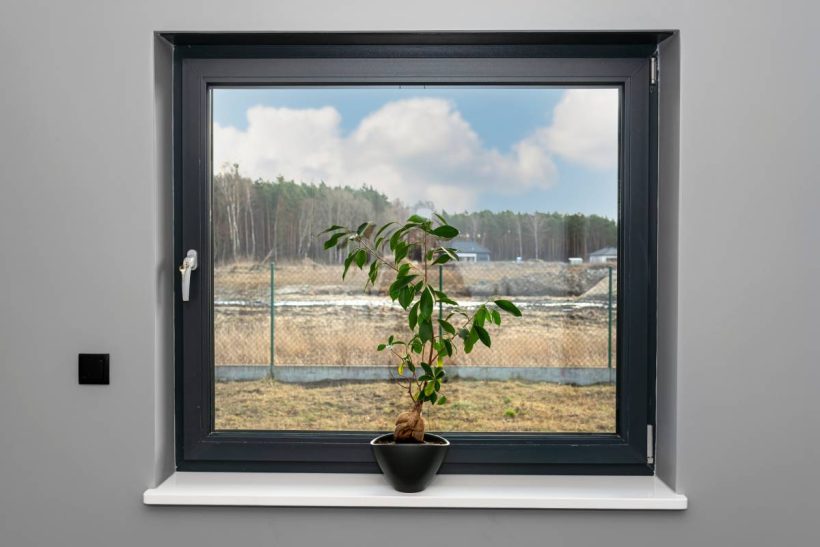When it comes to windows, two key components stand out: window trim and window frames. While they both contribute to the overall functionality and aesthetics of a window, they serve distinct purposes in the construction and design process.
In this discussion, we’ll delve into the essential characteristics of window trim and window frames, highlighting their differences and roles in creating well-designed and functional window installations. Understanding these components is crucial for homeowners, builders, and renovators alike, as they play integral roles in ensuring the durability, energy efficiency, and visual appeal of windows in any structure.
What is the most common window frame?
When it comes to window frames, there’s one that stands out as the most common: the versatile and widely-used vinyl window frame.
Let’s delve into why it’s so popular and what makes it a top choice for homeowners and builders alike.

Vinyl Window Frames
Vinyl window frames are made from polyvinyl chloride (PVC), a type of plastic known for its durability, affordability, and low maintenance requirements. These frames have become ubiquitous in modern construction and renovations for several compelling reasons:
Affordability
Vinyl window frames are typically more budget-friendly compared to other materials like wood or aluminium. This cost-effectiveness makes them accessible to a wide range of homeowners, making them a popular choice for both new construction and replacement projects.
Durability
Vinyl is highly resistant to moisture, insects, rot, and decay, making it an ideal option for areas with humid or damp climates. Unlike wood, vinyl won’t warp, crack, or swell when exposed to moisture, ensuring longevity and structural integrity over time.
Low Maintenance
One of the most attractive features of vinyl window frames is their minimal maintenance requirements. Unlike wood frames that may need regular painting or sealing to prevent deterioration, vinyl frames can be easily cleaned with soap and water, requiring little more than occasional maintenance to keep them looking their best.
Energy Efficiency
Vinyl window frames often come with insulated glass units (IGUs) that help improve energy efficiency by reducing heat transfer and preventing drafts. These energy-saving features can lead to lower heating and cooling costs, making vinyl windows a smart investment for homeowners looking to improve the energy efficiency of their homes.
Versatility
Vinyl window frames are available in a wide range of styles, colours, and finishes to suit any architectural design or aesthetic preference. Whether you prefer the traditional look of double-hung windows or the sleek modern appearance of casement windows, there’s a vinyl option to match your needs.
Easy Installation
Vinyl window frames are lightweight and easy to install, making them a favourite among contractors and DIY enthusiasts alike. Their ease of installation can help streamline construction projects and reduce labour costs, making them an attractive option for builders and homeowners looking to save time and money.
Environmental Impact
While PVC is a type of plastic, modern manufacturing processes have made significant strides in reducing the environmental impact of vinyl window frames. Many manufacturers now use recycled materials in their production process and offer recycling programs for old windows, helping to minimize waste and promote sustainability.
Can I install a window without the frame?
Installing a window without a frame is not a standard practice in conventional construction. Window frames play a crucial role in supporting the window structure, providing stability, and ensuring proper installation.
However, there are alternative methods and scenarios where installing a window without a traditional frame might be feasible or necessary. Let’s explore this topic further to understand the considerations involved.
Standard Window Installation with Frames:
In typical construction, windows are installed within a frame, which is then secured to the structural opening in the wall. The frame provides structural support, helps to seal the window against the elements, and allows for easy operation of the window sash (the movable part of the window).

Considerations for Installing a Window Without a Frame:
While it’s not common to install a window without a frame, there are situations where alternative methods may be used:
- Replacement Windows: In some cases, when replacing an existing window, the original frame may be in good condition, and only the window sash needs to be replaced. In this scenario, the new window sash can be installed directly into the existing frame without the need for a new frame.
- Custom Installations: In unique architectural designs or custom-built structures, unconventional window installations may be employed. This could involve using structural supports or other framing methods to secure the window in place without a traditional frame. However, these installations would require careful planning and engineering to ensure structural integrity and weatherproofing.
- Temporary Installations: In temporary structures or makeshift shelters, windows may be installed without frames using improvised methods such as securing the window directly to the opening with brackets or fasteners. While this approach may suffice for short-term use, it’s not suitable for permanent installations or structures requiring long-term durability.
- Specialized Applications: Certain specialized windows, such as skylights or glass block windows, may have unique installation requirements that differ from standard framed windows. In these cases, specialized mounting systems or structural supports may be used instead of traditional frames.
Challenges and Risks:
Installing a window without a frame presents several challenges and risks:
- Structural Integrity: Frames provide essential support and stability for windows, ensuring they remain securely in place. Installing a window without a frame could compromise the structural integrity of the window installation, leading to safety concerns and potential failure over time.
- Weatherproofing: Frames help to seal the window against moisture, drafts, and other outdoor elements. Without a proper frame, it’s more difficult to achieve effective weatherproofing, increasing the risk of water infiltration, air leaks, and energy loss.
- Aesthetics and Functionality: Window frames also contribute to the aesthetics and functionality of the window installation. Without a frame, the finished appearance may be less polished, and the operation of the window sash could be compromised.
What is the difference between window trim and window frame?
Window Frames
Window frames are the structural components that surround and support the entire window assembly within the wall opening. They are typically made of materials such as wood, vinyl, aluminium, or fibreglass and are installed directly into the rough opening of the wall during construction or renovation.
Key Characteristics of Window Frames
- Structural Support: Window frames provide essential structural support for the window assembly, helping to hold the window in place within the wall opening.
- Weatherproofing: Frames help to seal the window against the elements, preventing moisture, drafts, and air leaks from entering the interior space.
- Attachment Point: Window frames serve as the attachment point for the window sash (the movable part of the window), hinges (for casement or awning windows), and hardware (such as locks and handles).
- Insulation: Many window frames feature insulation materials or thermal breaks to improve energy efficiency and reduce heat transfer.

Window Trim
Window trim, also known as casing or moulding, is the decorative and functional finishing element that surrounds the perimeter of the window frame. It is installed on the interior and/or exterior surfaces of the window frame to enhance its appearance and conceal any gaps between the frame and the wall opening.
Key Characteristics of Window Trim
- Aesthetic Enhancement: Window trim adds visual interest and architectural detail to the window assembly, enhancing the overall appearance of the room or building.
- Concealment of Gaps: Trim helps to conceal any gaps or imperfections between the window frame and the wall opening, providing a clean and finished look.
- Protection: Exterior trim can help protect the window frame from exposure to the elements, such as rain, snow, and UV radiation, prolonging its lifespan and reducing maintenance requirements.
- Style Variety: Window trim comes in a wide range of styles, profiles, and materials to complement different architectural styles and design preferences, including traditional, modern, colonial, and craftsman.
Key Differences Between Window Trim and Window Frames
- Function: Window frames provide structural support and weatherproofing for the window assembly, while window trim serves as a decorative and finishing element.
- Location: Window frames are installed within the wall opening, while window trim is installed on the interior and/or exterior surfaces of the frame.
- Material: Window frames are typically made of structural materials like wood, vinyl, aluminium, or fibreglass, while window trim is often made of decorative materials such as wood, PVC, MDF (medium-density fiberboard), or composite materials.
In conclusion
The distinction between window trim and window frames is vital for anyone involved in construction, renovation, or design projects. While window frames provide structural support and weatherproofing for the window assembly, window trim adds the finishing touch, enhancing the overall appearance and concealing any imperfections.
Whether considering a new window installation or upgrading existing windows, the careful consideration of window trim and window frames ensures well-designed and efficient window solutions that enhance both the interior and exterior of any structure.










